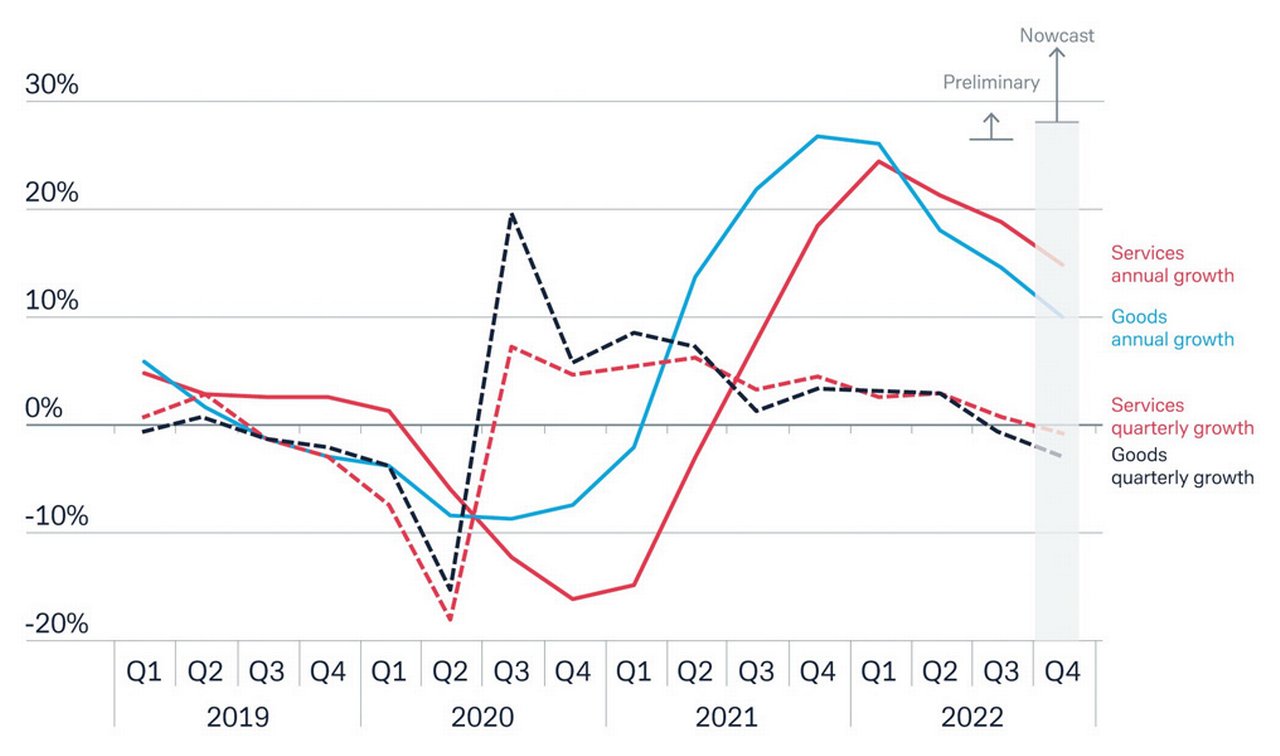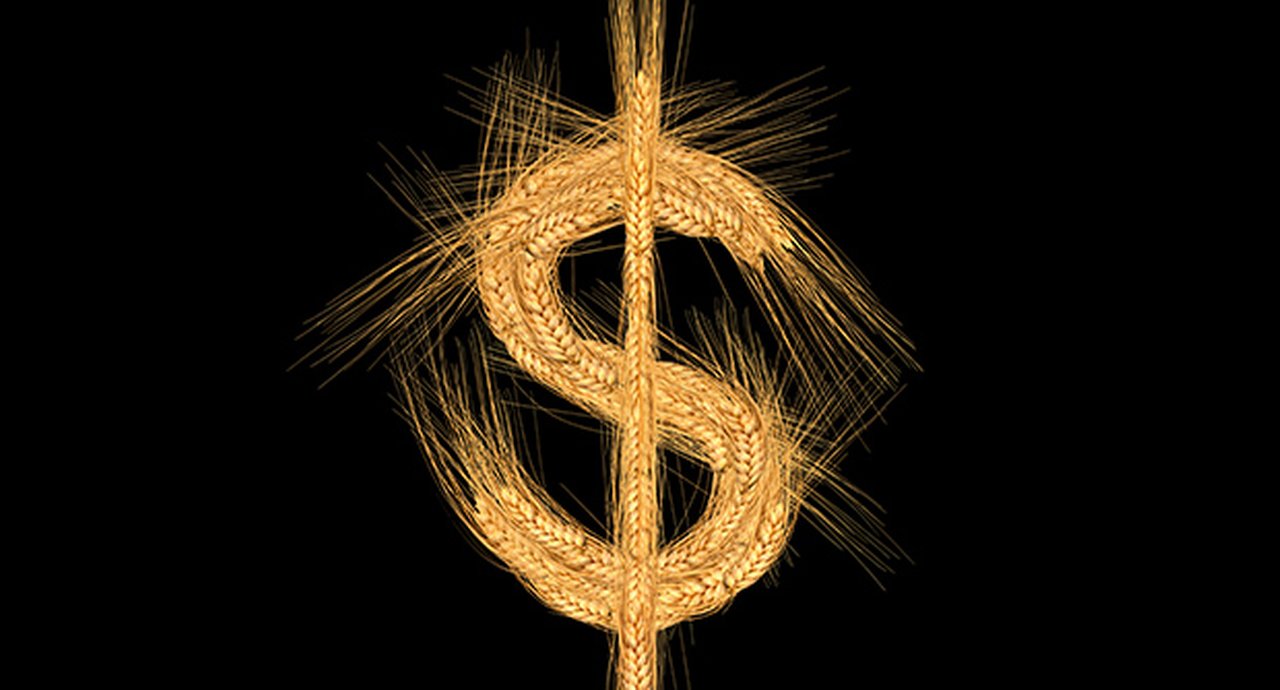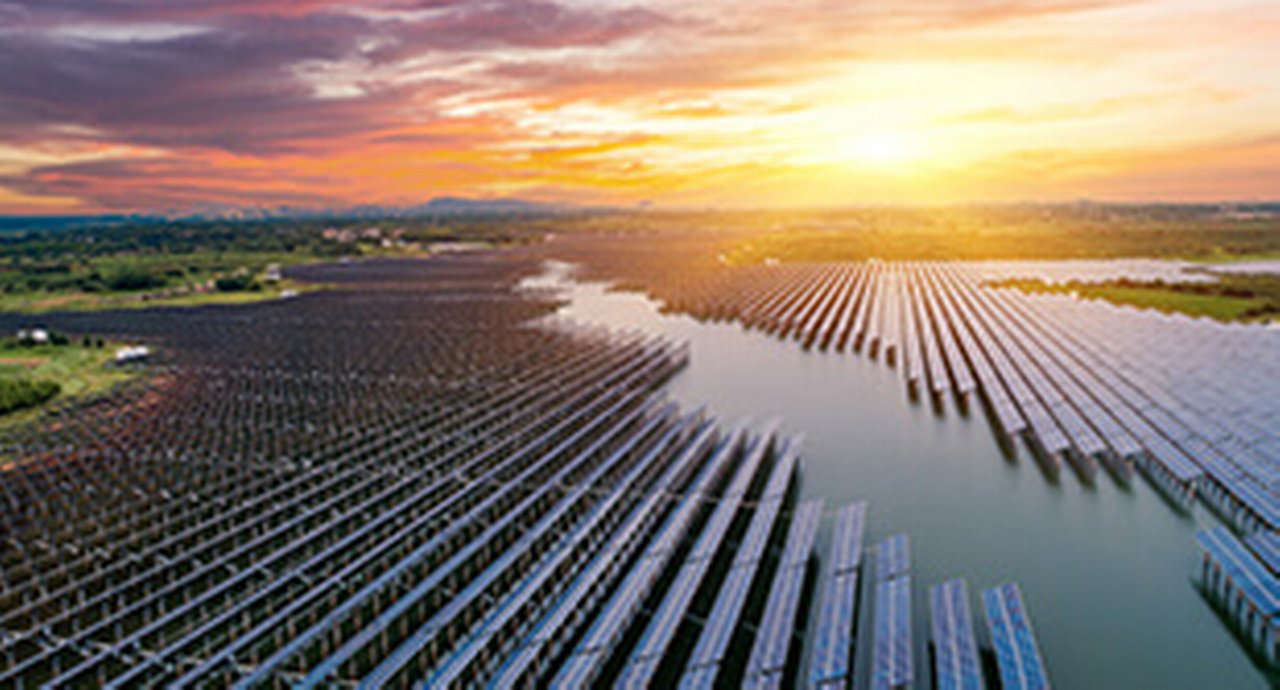16 February 2023
Trade economist Dr Rebecca Harding shares her deep dive into the three main drivers shaping trade volumes and values for 2023
MINUTES min read
The United Nations Conference on Trade and Development, aka UNCTAD, was upbeat about trade in 2022 in its recent Global Trade update1 but less so for 2023. Last year’s merchandise trade increased by 10% on 2021 values, and service trade by 15% (see Figure 1).
The boost is largely the result of recovery from the pandemic and its attendant supply chain crises. However, the outlook over the coming year for trade in goods will be affected by rising prices of raw materials and energy inputs, meaning that trade growth is likely to slow despite improvements in global supply chain management and pending Free Trade Agreements in Africa and Asia.

Figure 1: Global trade trends 2019–2022
Source: UNCTAD calculations based on national statistics. Note: Quarterly growth is the quarter over quarter growth rate of seasonally adjusted values. Annual growth refers to the last four quarters. Figures for Q3 2022 are preliminary. Q4 2022 is a nowcast
Much of what will emerge during 2023 should, however, be seen in the context of how broader political factors impact rather than just economic ones. So, what are the key influences that will drive trade during the course of this year?
The global economy – interest rates and inflation
We cannot ignore the global economy, interest rates and inflation. Forecasts are mixed, with the World Bank suggesting the second global recession in three years is inevitable given upward pressure on interest rates.2 Despite a more upbeat tone at Davos3 in January, we cannot preclude the fact that uncertainty itself presents a downside risk. Much will be determined by whether the recent Fed policy tightening eases or ends; the IMF now expects global inflation to ease – from 8.8% in 2022 to 6.6% this year and 4.3% in 2024 – but not to its pre-pandemic level of 3.5%, meaning that central banks must keep a tight hold on monetary policy.4 It is clear therefore, as any hardened economist will tell you; “inflation is sticky downwards”5 which is what will drive near-term Fed policy. As Queens’ College Cambridge President Mohamed El-Erian wrote in the Financial Times on 9 January 2023, we must avoid last year’s mistake of assuming there is such a thing as “transitory inflation” – it's better to sit on the fence and avoid offering inflation predictions than to suggest that inflation will ease.6
Much of this caution is because the roots of inflation in this crisis are not based on factors that are directly within the gift of central banks to control:
- First, inflation this time around has come undeniably from the impact of Russia’s action in Ukraine and the subsequent attempts to constrain that action.
- Second, China’s attempts to recover politically and economically from its prolonged zero-Covid efforts were given a turbo-boost when it ended its travel restrictions.
Before its Covid policy U-turn the issue was whether or not China would undermine global trade because of its weak growth, whereas now it is more directly around the ability of its manufacturing sectors to keep up with demand as staff fall sick. Given that China’s purchasing managers’ index (PMI) has been declining since July 2022, the effects of its reopening on global inflation may yet be more severe.7
This confluence of factors means that trade is the source of inflationary pressures rather than excessive demand. Volumes have not increased at anywhere near the rate of values, and this is a risk to trade and trade finance.
“The world at present is set on a pattern of economic “decoupling””
Geopolitics
The second unknown is geopolitics. The world at present is set on a pattern of economic “decoupling” although deglobalisation itself – given how interdependent the world’s trading and technology systems are – is by no means obviously accelerating.8 Oddly, within this framework, Russia is a “known-unknown” – the regime is predictably unpredictable and its relationship with the West is evidently at best tense, and at worst destructive. The shake-out from the new sanctions regimes and export controls is only just beginning to work through, but these are now factors that have become risks rather than uncertainties.
China, by contrast, is an “unknown-unknown” and most of the uncertainty will be around how its relationship with the West pans out. As a Financial Times editorial of 10 January noted, there have been hopeful signs of a less aggressive rhetoric. “From a diplomatic perspective, China’s main aim is to improve relations with some countries in the west, after a period which has at times left Beijing feeling uncomfortably isolated. The focus is on ties with Europe, which have been badly damaged by China’s support for its partner Russia throughout Moscow’s war against Ukraine,” noted the newspaper.9 A rapprochement with the US might be further off since American fighter jets brought down a giant Chinese balloon on 4 February over US territorial waters.10
China’s economy and trade are so central to the global system that any uncertainty about its economy, its technology or its foreign policy will add to the unpredictability of its future role in the world. How 2023 plays out will be determined by the speed with which its economy regains its mojo post-Covid and the resultant impact on global supply chains.
Sustainability regulation
Finally, 2023 is the year when sustainability regulation becomes a direct challenge to trade. Volumes of text have been written about sustainability and the tipping point that the planet is rapidly reaching where, as the UN terms it, irreversible climate change is inevitable.11 There is little more to add on a trend that is so clearly devastating to lives and livelihoods. In a sense, the drivers for 2023 at a political and geopolitical level will be, firstly, to ensure that climate change and net zero targets are adhered to and secondly to make sure that climate change regulations globally do not become a source of either trade or geopolitical tensions in and for themselves.
From a trade and trade finance perspective the material changes are to the regulatory frameworks being introduced over the course of 2023. Companies are now bound by the European Sustainable Finance Disclosure Reporting (SFDR) standards and the EU Taxonomy reporting requirements to disclose their financial allocations to areas of the Taxonomy and the associated financial risk. Correspondingly, financial institutions should understand their capital exposure to climate risk through their portfolios and potentially use the pricing systems to mitigate the exposure and help manage the transition.
This is a large shift in the importance of ESG in the reporting frameworks. It will have huge implications for trade finance practitioners: the potential tightening of AML-KYC compliance to include ESG compliance; closer scrutiny of supply chains; limitations on the number of SMEs that can access trade finance because of closer scrutiny; and ultimately the tightening of trade between “compliant” and “non-compliant” countries. 2023 will be the year when all this shakes out and banks begin to assess exactly what they need to be reporting from 2024 in trade terms. It is another seismic shift and one that cannot be underestimated in its importance – expect the theme of “Capital at Risk” to go beyond compliance into climate this year.
Planning for uncertainty
In summary, “events” are a problem because we miscalculate, and strategic challenges are just that because we are not assessing their likelihood in an effective way throughout. What is clear beyond all else is that this is the year when, more than ever, trade and trade finance practitioners are tasked with implementing measures over which they have little or no control. Planning for uncertainty will be the only way to turn some of the unknown unknowns into known unknowns…
Dr Rebecca Harding is an independent trade economist and a regular contributor to flow
Sources
1 See unctad.org
2 See worldbank.org
3 See bloomberg.com
4 See mediacenter.imf.org
5 See swissre.com
6 See ft.com
7 See statista.com
8 See dw.com
9 See ft.com
10 See bbc.co.uk
11 See news.un.org

Dr. Rebecca Harding
Independent trade economist
Trade finance solutions Explore more
Find out more about our Trade finance solutions
solutions
Stay up-to-date with
Sign-up flow newsbites
Choose your preferred banking topics and we will send you updated emails based on your selection
Sign-up Sign-upSubscribe Subscribe to our magazine
flow magazine is published annually and can be read online and delivered to your door in print



